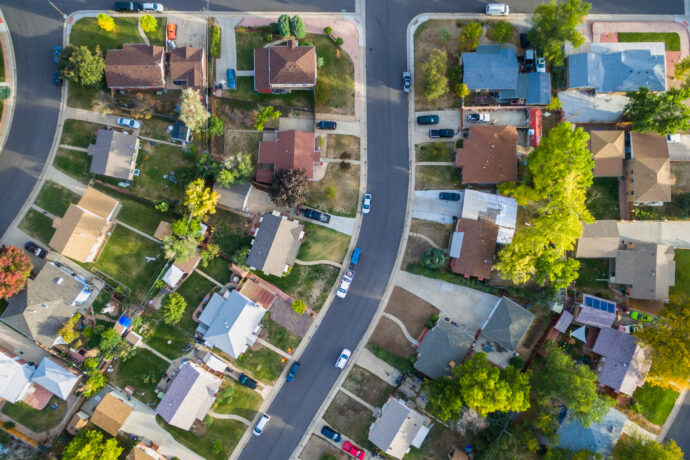One of the top priorities for any local church is engaging with our surrounding community. Connecting with our neighbors is easier said than done, thought, isn’t it? Unless you are a new church plant, your community already has preconceived ideas of your church—or, heaven forbid, the community is not aware of your church at all! Either way, paving new avenues of outreach into your neighborhood is not an easy task. But there are some simple steps you can take to begin laying the groundwork for a deeper connection with your community.
If your church is looking to begin new outreach or compassionate ministry work, you should start by identifying your parish. Your parish, simply defined, is the geographical area around your church that your congregation decides to take responsibility for. This could be as simple as focusing on your zip code or defining physical markers (interstates, rivers, main roads, etc.) that create the north/east/south/west boundaries of the place you are calling your church’s neighborhood. When determining the dimensions of your parish you can consider things like:
- Where are the local stores and restaurants?
- What is the walkable area of your neighborhood?
- What housing areas and subdivisions consider themselves to be in your community?
- What housing areas consider themselves to be outside of your community?
- What are the neighborhood boundaries as defined by local municipal and law enforcement leaders?
Define your parish area, and then commit to investing in it. Commit to engaging your community through prayer, financial support, evangelism, discipleship, and compassionate ministry.
After you have specifically identified your church’s neighborhood, here are 4 tips for engaging your parish community:
1. Listen and learn. Before jumping into action, take time to listen to your neighbors and develop a more holistic perspective of the rhythms, priorities, and activities in your community. The best outreach is informed outreach. Prioritizing this first step will give you the opportunity to build trust and friendships with your neighbors. An easy way to doom our outreach activities is by assuming we know the needs and desires of our neighbors without first building relationships. The key in this step of community engagement is to seek to engage in ministry with your neighbors rather than simply ministry to your community. Be a good student of your community.
a. Take Action: Go on a prayer walk through your community with members of your church, or attend localized community or neighborhood meetings.
2. After taking the time to grow in your understanding, find some simple ways to take part in what is already happening in your community. Press pause on your impulse to start new initiatives and take part in the great things already going on around you. Invite your congregation to invest in relationships with neighbors through the ministry of ongoing presence. Build trust through consistency.
a. Take Action: Attend athletic events at local schools or frequent a locally owned restaurant or coffee shop on a weekly basis.
3. Consider working together with another organization to expand an existing program or ministry. Build on the relationships you have created through listening, learning, and participating in your parish in order to partner together for the betterment of your community. Partnerships with other trusted organizations are a great way for a church to become more deeply engaged in a community.
a. Take Action: Your church can commit to providing tutors for your local elementary school one day a week or partner together with another church to host a neighborhood summer VBS program in a local park.
4. Fill a gap. After listening, participating, and partnering, you may find a need that is not yet being met. Now that you have spent time investing in the previous steps, your church will have built up the trust equity in your community to journey together toward filling the gaps that remain. While you may identify multiple needs, start small and focus on one specific need that your church congregation can help address in your community. And remember, you don’t have to do this alone. Seek out partners and collaborators to increase the insight and improve the effectiveness of your outreach work in the community.
a. Take Action: Start a community garden on your church property to combat food inequality. Or start a recovery program on a night that complements the timing of other recovery programs in the area.
These steps are a recipe in the sense that the broad strokes are important, but the details can be tweaked in order to arrive at the best end goal for your context. Some steps will take more time and effort than others. Each step should be revisited from time to time—especially listening and learning—because outreach is never simple or linear. Engaging our communities is messy work because humans are all a bit messy! But the mission of reaching your neighbors with the transformational good news of Jesus Christ is worth the work and the messiness. While it will not be easy, engaging your parish does not have to be convoluted or complex. Get started by getting into your neighborhood!
Here are a few tools that can assist you along the way:
- For examples of urban Nazarene churches with this parish mentality, check out Dr. David Busic’s book The City.
- If you are looking for resources on compassionate ministries in the USA & Canada region, dive into the Nazarene Compassionate Ministries regional webpage.
- As you pray with and for your parish, consider the brand-new, church-wide study (with resources for youth and children), Praying with Jesus.





0 Comments